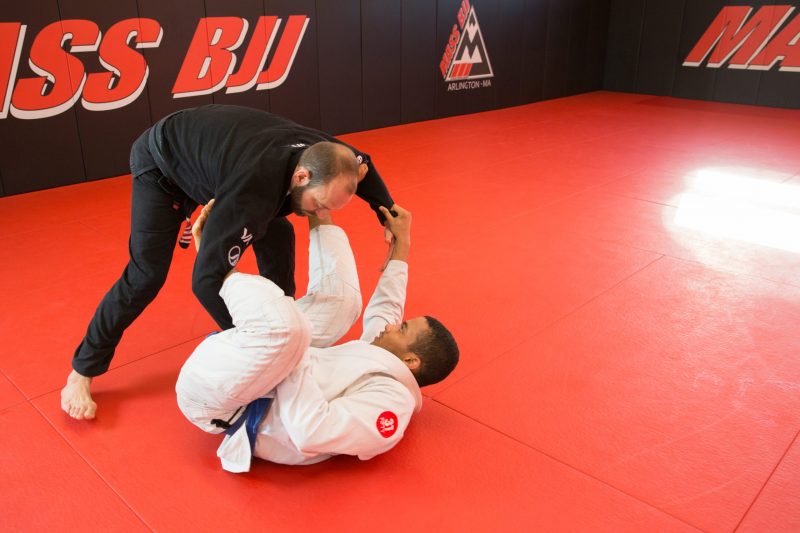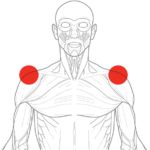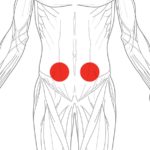Best Exercises for the BJJ Guard Player
Heather Raftery
BJJ guard players often suffer from hip imbalances. Here are our three favorite exercises to improve hip strength and flexibility.

The 3 Best Exercises for the BJJ Guard Player
Jiu-jitsu certainly takes a toll on the body, and the risk of a BJJ related injury is always there if you aren’t properly taking care of yourself. The type of game you play can largely determine the kinds of injuries you might be most at risk for, as different games put stress on your body in different ways.
For example, take BJJ guard players. Whether you prefer the traditional closed guard, an open guard, or any of the modern lapel guards, there are two things all these BJJ guards all have in common: you spend a lot of time on your back and/or butt, and your legs become your first line of defense against your opponent.
Now, you might think – and logically so – that your back and knees take the brunt of the stress. You wouldn’t be wrong, as these areas are typically areas of concern for the average guard player, and, really, for the average jiu-jitsu practitioner in general.
However, tightness or imbalances in the hips are actually the biggest concerns for BJJ guard players.
It's all in the hips
Think about it: when you’re playing guard, you’re doing a lot of sitting up, sitting back, pushing your legs away, bringing them back in toward your torso, butterflying your legs, windshield wiping them in and out, etc. All of these movements involve some kind of rotation of your femur in the hip socket of your pelvis.
As the largest joint in the human body, the hips play a huge role in most – if not all, to some degree – large bodily movements. As jiu-jitsu practitioners, we use our hips in pretty much every single position or technique.
Which is why taking care of your hips is vitally important, not only to help keep you on that mat, doing what you love to do, but also to keep you functioning in your everyday life. Try sitting down at your desk or even the toilet with an injured hip! Yet, we so often neglect our hips… until it’s too late.
There are a lot of injuries that can happen to the hip, especially for athletes. These include: strains in the muscles around the hip region, inflammation of the bursa (bursitis) in the hip joint, stress fractures around the junction of the femur and pelvis, a labral tear (of the cushy supportive tissue of the hip joint, like the meniscus of the hip), and osteitis pubis (inflammation due to the pull of muscles over the hip joint).
Prehab for the BJJ guard player
Prehab is a powerful tool to minimize the risk of these injuries. By promoting proper body mechanics around the hip region, as well as stretching and strengthening key muscles in the area, prehab helps to correct the weaknesses and imbalances that are typically the main cause of jiu-jitsu related injuries. By taking proactive measures against injury – such as prehab, yoga and strength training – we are not only better equipped to handle the unique stresses that playing guard has on our bodies, but we are also able to develop better, stronger guards, period.
Here are Mike Pellegrino’s three favorite prehab exercises for the everyday BJJ guard player:
Kneeling Hip Flexor Foot Up Stretch
Your hip flexors are the groups of muscles that run from the back of your spine and around toward the front of your hip, and are what allow you flex your hip and bend your knees. They’re prone to strain and tears if you don’t stretch them properly before vigorous activity.
The Kneeling Hip Flexor Foot Up Stretch is a lower body flexibility exercise for the muscles of your hips – particularly your hip flexor – as well as your knees. To begin, you place one knee down, with your foot elevated and propped up on the seat of a chair (or any elevated surface, or even against a wall). You will have your other leg bent at a 90-degree angle, with your foot flat on the ground and your knee aligned over your foot. With your arm elevated over your head (same side arm as elevated foot) extend your hips first, bringing yourself as far forward as you can, then side-bend away from the down leg. Hold for 30 seconds, then switch sides and repeat for 30 seconds.
Piriformis Stretch
The Piriformis is a small, flat muscle located behind the large muscles of the butt, near the top of the hip joint, alongside the sciatic nerve. This muscle plays a role in stabilizing the hip joint during any kind of lower body movement, particularly when lifting or rotating the thighs.
The Piriformis Stretch is a lower body flexibility exercise for the muscles of your hips – specifically your piriformis muscle – as well as your knees. Begin sitting down, with your arms braced behind you, one foot flat on the ground in front of you, your other leg bend and crossed in front of the thigh of your planted leg, with your knee flared outward. Try to bring your hips to your heel, and your chest to your shin. Hold and breathe for 30 seconds. Then switch sides and repeat for 30 seconds.
Leg Swings
Leg Swings are a hip and ankle mobility exercise. To begin, stand alongside a chair or even a wall (to use for balance), and kick your leg forward and back for 10 seconds, trying to keep your posture nice and upright, bringing your leg up as high as you comfortably can. After 10 seconds, you’ll turn 90-degrees to face the chair or wall, and swing your leg across your body and back, trying to bring it up as high as you can. After 10 seconds, switch legs, beginning with the forward leg swing, followed by the side leg swing.
Heather Raftery is an Atos black belt, freelance writer and social scientist (BA in Journalism and Anthropology, MA in International Studies). She has written for FloGrappling, Jiu Jitsu Magazine, Fighters Market and BJJ Prehab.









